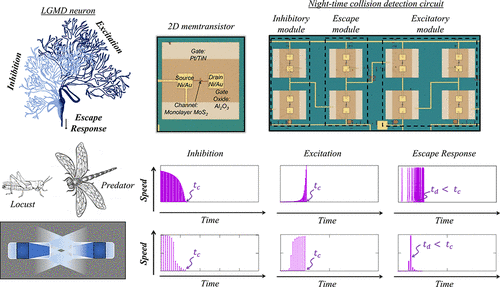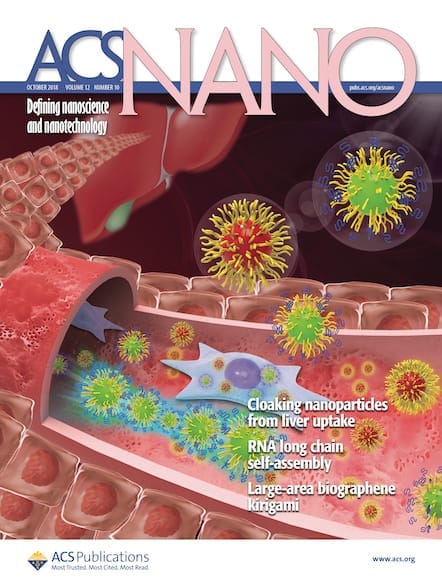Could we learn something from insects to help us avoid human-scale collisions, especially when driving at night?

The visible remains of insect collisions on the windshield are a common side effect of driving—but these small creatures are inherently very good at not crashing into each other. Could we learn something from insects to help us avoid human-scale collisions, especially when driving at night?
Whatever your stance on the scientific robustness of the so-called windshield phenomenon,1 there is reputable data on other aspects and risks of driving (and on insect decline, but we’ll get to that later).
For instance, we know that despite only about 25% of car travel happening after dark, almost half of fatal accidents occur at night.2 Current collision-avoidance systems can automatically deploy braking when an object gets too close. These systems usually rely on an image of the space around the car, but in heavy rain or low light, the image is not always clear enough. Furthermore, it is difficult to miniaturize more complex radio- and radar-based systems due to their size, weight, and power needs.
But despite this, collision detection is evolving. And—as for many other technologies—we have looked to nature for inspiration, specifically taking note of how insects avoid bumping into each other in the dark.
Swerving for Survival
New research reported in ACS Nano from a team at Penn State University, USA, highlights a simple, power-saving collision detector inspired by flying insects such as locusts.3 These creatures often move in a dense swarm, and at times, need to quickly change course to evade an oncoming predator. The biological networks underpinning this behavior contain specialized neurons and synapses which not only sense and process external stimuli with great energy efficiency, but also learn and adapt to ensure survival.4
The insect-inspired models involve three key stages: the transduction of visual stimuli into electrical impulses by photoreceptors in the eyes, information processing using movement-sensitive neurons, and an escape response by motor neurons guided by the information gathered.3
The authors argue that, although the general architecture of separate sensing and processing modules is the same in insects and in image-sensor-based collision detectors, task-specific obstacle avoidance algorithms allow insects to reap substantial benefits in terms of size and energy.
Based on this observation, the researchers developed the detector by using a reconfigurable optoelectronic circuit containing eight photosensitive memtransistors based on monolayer MoS2. The device was able to mimic excitatory, inhibitory, and escape responses for timely collision detection in various real-life scenarios under poor light or night-time driving.3

In tests, the detector could sense a potential two-car accident at least three seconds before it happened, giving the driver enough time to take critical corrective action. The in-sensor capability and programmability of this technology could also be easily adapted for various optoelectronic applications beyond collision detection.3
Taking Cues from the Insect World
Similar optoelectronic devices based on emerging two-dimensional layered MoS2 have previously been used to create bioinspired neural networks capable of sensing, encoding, learning, forgetting, and inferring at minuscule energy expenditure.5
And it’s not the first time we have looked to insects for information about sensing. Work in chemical ecology has identified the visual and chemical cues that insects use to find food, especially for solitary species such as hoverflies.6 This in turn supports the development of bioelectronic components that can be used for real-time detection, such as nanotube “tongues” that mimic a bee’s proboscis.7
Other groups have been inspired by insect antennae, whose tactile sensing capabilities have proven useful when mimicked and integrated into biomimetic robot systems—and even insect odor receptors may one day be primary components for some biosensing technologies.8,9
Even though scientists continue to make great strides in discovery based on insect biology and behavior, time could be running out—with results from global studies revealing that a third of insect species are endangered and estimates suggesting that a quarter of insects could be wiped out by 2030.10 Can we head off that collision in time? There is likely so much left to learn from our multi-legged friends, but it is up to us to rethink our habits and take measures to preserve the biodiversity of the insect world—one of our most fascinating sources of scientific inspiration.
Want More Bug Science? Check Out These Axial Posts:
The Secret of Spinning
Metamorphosis in the Robot World
Researchers Fight Ticks By Targeting Their Salivary Glands
Hear the Buzz About a New Class of Mosquito Repellents
Scorpion Venom Yields Novel Alkaloid
References
- Acorn, J. The Windshield Anecdote. American Entomologist 2016, 62, 4, 262–264.
- Wood, J. M. Nighttime driving: visual, lighting and visibility challenges. Ophthalmic Physiol. Opt.2020, 40, 187– 201.
- Jayachandran, D. et al. Insect-Inspired, Spike-Based, in-Sensor, and Night-Time Collision Detector Based on Atomically Thin and Light-Sensitive Memtransistors. ACS Nano 2023, 17, 2, 1068–1080.
- Dodda, A. et al. Bioinspired and Low-Power 2D Machine Vision with Adaptive Machine Learning and Forgetting. ACS Nano 2022, 16, 12, 20010–20020.
- Radhakrishnan, S. S. et al. An All-in-One Bioinspired Neural Network. ACS Nano 2022, 16, 12, 20100–20115.
- Katsnelson, A. Decoding an Insect’s Sensory World. ACS Cent. Sci. 2018, 4, 7, 785–788.
- Choi, Y. et al. Bioelectronic Tongues Mimicking Insect Taste Systems for Real-Time Discrimination between Natural and Artificial Sweeteners. ACS Sens. 2022, 7, 12, 3682–3691.
- Lee, H. J. et al. Antenna-Shaped Biomimetic Tactile Sensor Using Elastomers and Conductive Liquid. ACS Appl. Electron. Mater. 2022, 4, 10, 4863–4872.
- Murugathas, T. et al. Biosensing with Insect Odorant Receptor Nanodiscs and Carbon Nanotube Field-Effect Transistors. ACS Appl. Mater. Interfaces 2019, 11, 9, 9530–9538.
- Sánchez-BayoaKris F, Wyckhuysbcd KAG. Worldwide decline of the entomofauna: A review of its drivers. Biological Conservation 2019, 232, 8–27.
